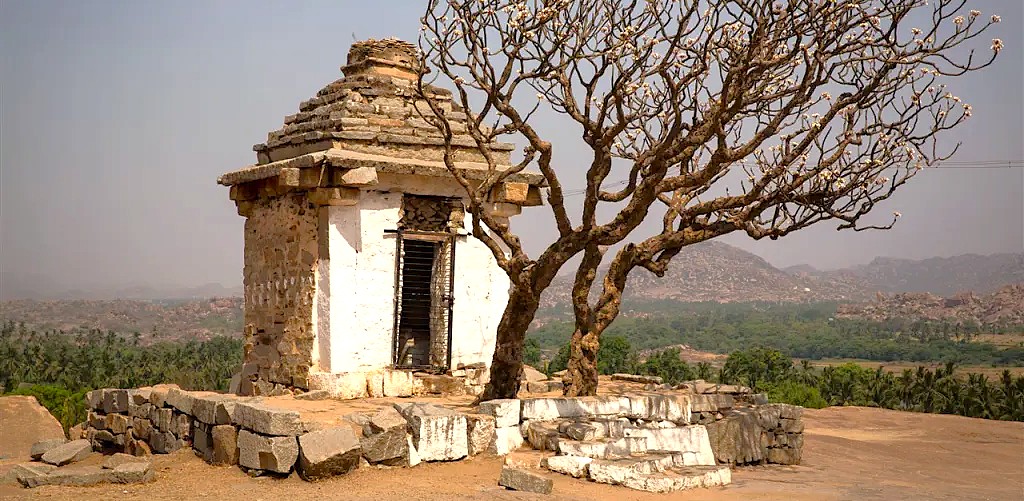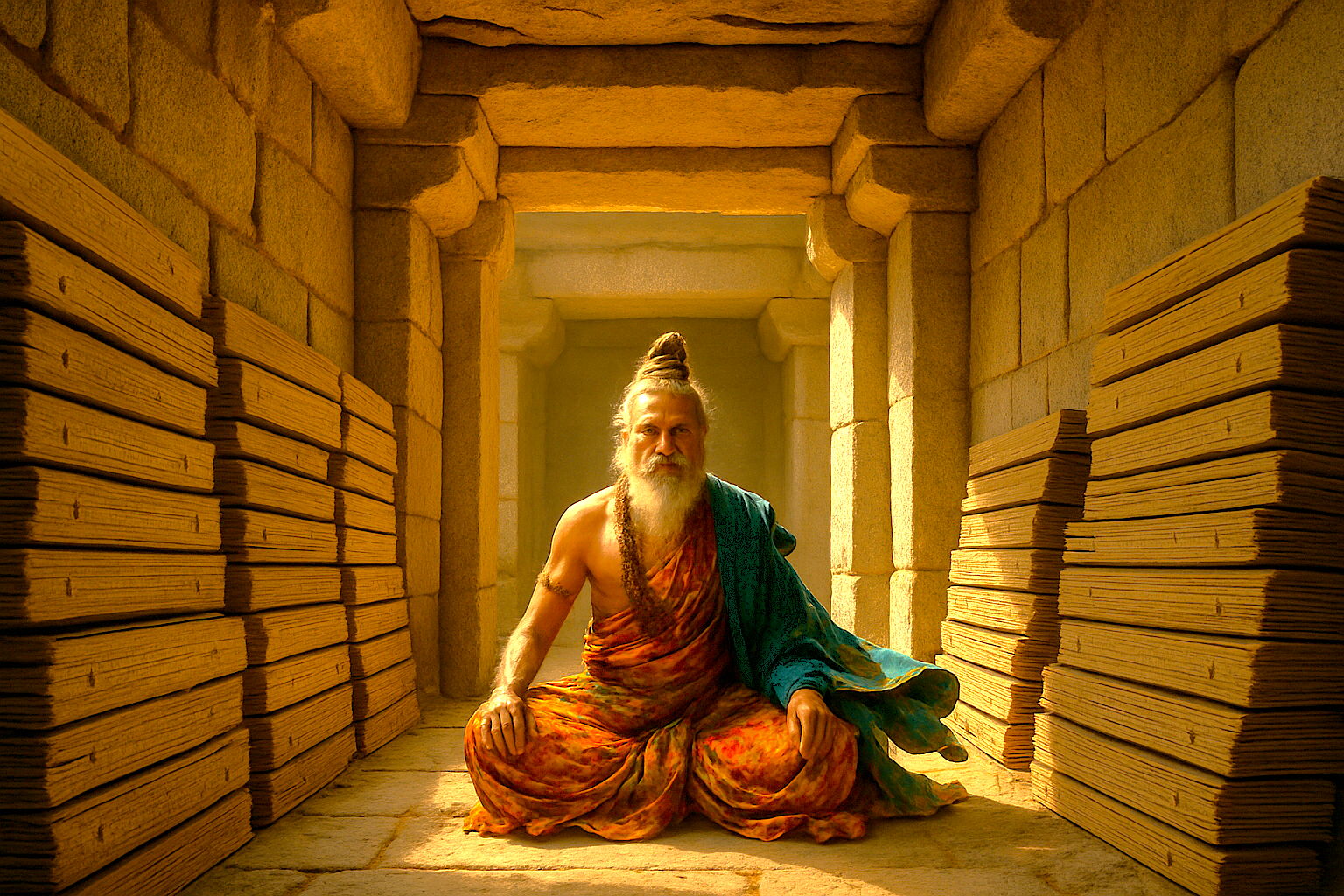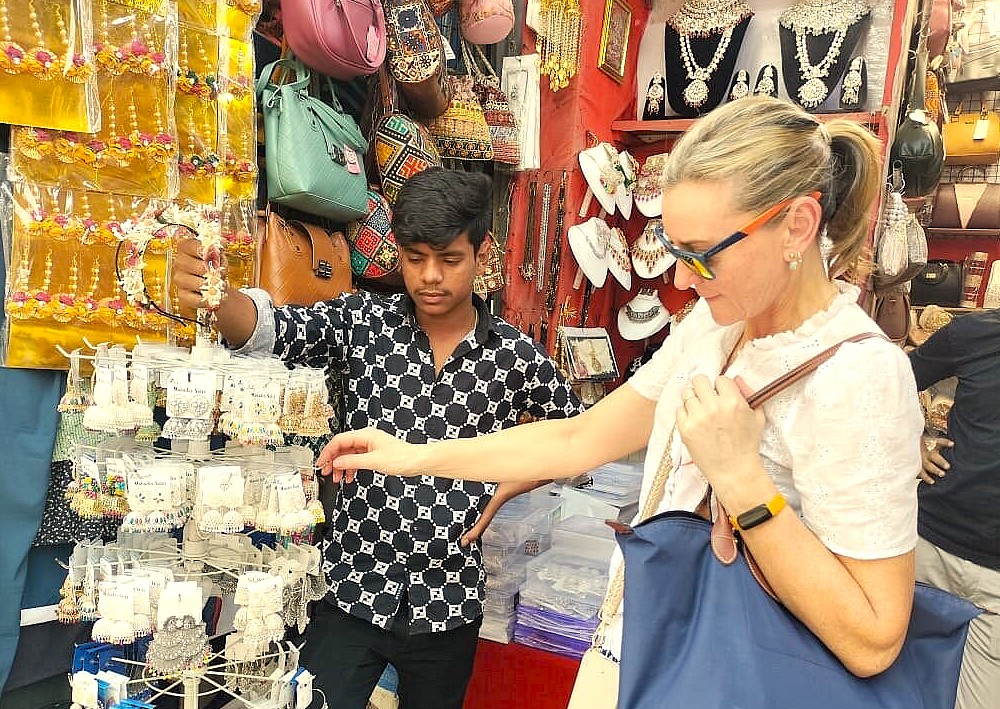Echoes of Ancient Lands
Hemakuta Hill Hampi India
Mother Masala Tours
Sacred Summit of Ancient Kings
Hemakuta Hill Hampi India. Rises majestically in Karnataka, its name derived from "Hema" (gold) and "Kuta" (peak), referring to the golden glow at sunrise and sunset. This historic elevation served as a strategic fortification during the Vijayanagara Dynasty, 1336-1565 CE. Before the empire's establishment, the hill held religious significance from the 6th century CE when early Dravidian temples were constructed. The hill complex features over 35 temples from different eras, each telling stories of architectural evolution from the Chalukyan Dynasty to Vijayanagara periods . Today, this Unesco World Heritage site stands as a testament to centuries of royal patronage and spiritual devotion. The surrounding area maintains a small population of traditional artisan families who have lived here for generations, continuing ancient crafts and religious practices.

Hemakuta Hill Hampi India: Sacred Spaces
This Unesco treasure, early morning light illuminates temples dating from the 9th to 14th centuries CE. The Moola-Virupaksha temple, oldest among them, bears inscriptions from 1068 CE. Jain temples showcase distinctive domed structures, while the two-storied Veerabhadra temple features unique stepped pyramidal towers .
Ancient Mosaics: Impeccable Craftsmanship

Master stonemasons of the Vijayanagara era carved reliefs of the Ramayana and Mahabharata across temple walls. Pillared pavilions built between 1336 and 1565 CE reveal careful planning, accurate layout, and consistent proportions based on standard modules. Each stone block fits without mortar, revealing tight joints, measured alignment, and repeatable construction methods across buildings. Craft tools left visible chisel lines, straight edges, and marks that help us understand technique and sequence. Combined features show practical mathematics in action, using ratios, plinth heights, and axis lines.
The Pulse of the Local Community
Hemakuta Hill Hampi India. Generations of families maintain age-old traditions around these sacred spaces. Their warm hospitality extends through offering prayers at dawn, sharing stories of ancient times, and maintaining traditional customs. We experience their deep connection to this spiritual landscape through their dedication to preserving centuries-old practices .
Capturing the Magic: A Photographic Haven

We explore the hill’s ridgelines, finding broad views across boulder fields and terraced temple roofs below. Morning light reveals soft contours on carvings, while shadows create strong leading lines through open courtyards. We frame silhouettes of shrines against sky horizons, with layered hills adding depth to wide compositions. Steps, archways, and pillared halls offer repeating patterns, giving scenes that balance foreground textures and backgrounds. Nearby lakes reflect stones and towers, creating mirror images that work well for framing and sunset offers softer tones across granite surfaces.
A Culinary Journey: Savor the Flavour
A place for authentic Traditional Karnataka cuisine. Enjoy hearty dishes prepared using time-honored, ancient recipes. Must-try specialties include flavorful Jolada Rotti (millet bread) and rich Badanekai Yennegai (stuffed eggplant curry). The unique taste comes directly from the landscape, utilizing fresh, local ingredients like native millets, lentils, and spices grown in the fertile surrounding villages. This is true regional food culture.
The Connection With the Gods

We hear stories about Rama and Balarama's journey into Hampi. Legends tell of the search for Sita, when they meet Hanuman, the monkey God. This encounter leads to an alliance with King Sugriva and his people. Hanuman understands Rama's quest, provides helpful guidance, and reveals the path toward Kishkindha. The hill's landscape holds these tales, connecting different heroic quests across time. Pledges of support are made, setting the determined search for Sita in motion. The epic story moves forward from this important meeting place. The air is still and the rocks seem to hold these old tales.
Festivals of Devotion: Honouring the Sacred and the Divine
Hemakuta Hill Hampi India. We find Hampi hosts several festivals, with Hampi Utsav as the largest event. Colourful processions moving through the ancient streets and pathways. Music and dance performances happen on stages set against the ruins. Artists and performers arrive from all over the country to participate. You can also see puppet shows, fireworks, and water sports. The entire site becomes lively with activity during these celebrations.
Serendipitous Meetings: Beyond the Main Path

We follow hidden pathways that reveal stone carvers maintaining their ancient tools and techniques. Small shrines dot the landscape throughout the area, and each seems to have its own unique story. We come across traditional instrument makers crafting large temple bells using age-old methods. These skills have been passed down through many generations of local families. The sounds of their work are a constant presence as we explore. We observe artisans focused on their crafts in small workshops along the route. This continuity of skill becomes apparent to us as we walk through these areas.
Ancient Technologies: Sacred Sound, Geometry & Astrological Influences
Sacred geometry based on Vastu Shastra principles guides every temple's design. Musical pillars, carved from single stones, produce healing frequencies - 432 Hz resonates with Earth's vibration, while Solefeggio frequenys 528 Hz creates transformation. Temple layouts align with celestial bodies, forming energy vortexes during solstices. The central dome's proportions follow the golden ratio (1.618), creating perfect acoustics. Granite blocks, fitted without mortar, demonstrate advanced engineering.
Urban Legends: Strange Sightings, Myths and Mysteries

Ancient inscriptions speak of underground chambers filled with royal treasures beneath the main temples. Mysterious bell sounds echo at midnight when no one is present. A hidden passage, mentioned in palm leaf manuscripts, leads to sage Vidyaranya's meditation chamber. Local tales tell of celestial lights during specific astronomical alignments. Stone pillars emanate unexplained energy fields, measured by modern instruments. Secret chambers are said to contain sacred texts. Some report hearing Sanskrit chants from empty temple halls during twilight hours.
Holy Monkey Mischief, It's India - Join Us
You witness golden sunrises over ancient granite temples, feel centuries of devotion in weathered stone carvings, and experience the timeless spirituality pulsing through these sacred spaces. We'll unlock stories etched in stone, discover hidden shrines among massive boulders, and feel the energy of ancient sound chambers. Early morning prayers and evening aartis create magical atmospheres as sun rays illuminate precisely aligned sanctums. This hill holds secrets waiting to be revealed. Take flight beautiful. The time is now, come and find your story.
Symphony of Generosity: Offerings from Wanderers to Residents

Our interactions with local artisans help sustain traditional stone carving and bell-making crafts. This engagement aids in preserving ancient skills and contributes to providing sustainable livelihoods. By observing and sometimes participating in cultural activities, we add to the community's economic stability. This exchange helps ensure the continuation of local knowledge and the wellbeing of families in the area. Traditional arts and customs are able to thrive through this type of quiet support. The artisans continue their work, and the cultural practices remain part of the local life.